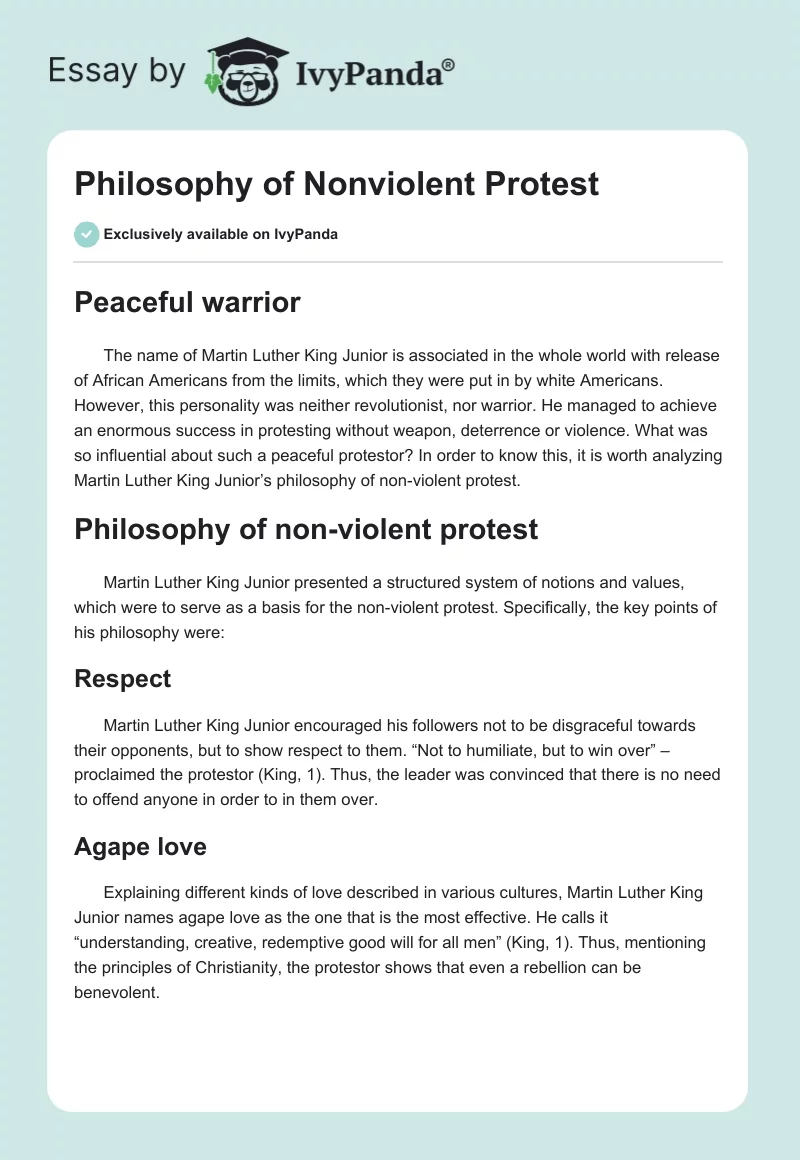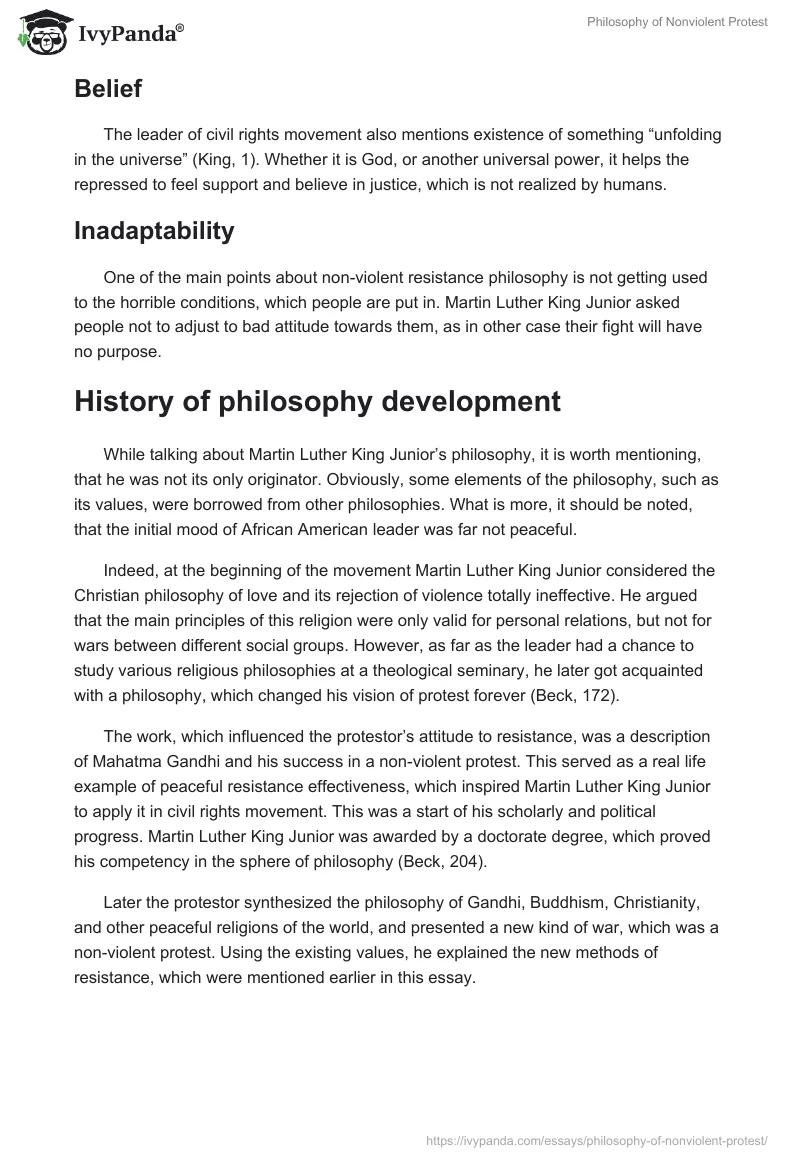Peaceful warrior
The name of Martin Luther King Junior is associated in the whole world with release of African Americans from the limits, which they were put in by white Americans. However, this personality was neither revolutionist, nor warrior. He managed to achieve an enormous success in protesting without weapon, deterrence or violence. What was so influential about such a peaceful protestor? In order to know this, it is worth analyzing Martin Luther King Junior’s philosophy of non-violent protest.
Philosophy of non-violent protest
Martin Luther King Junior presented a structured system of notions and values, which were to serve as a basis for the non-violent protest. Specifically, the key points of his philosophy were:
Respect
Martin Luther King Junior encouraged his followers not to be disgraceful towards their opponents, but to show respect to them. “Not to humiliate, but to win over” – proclaimed the protestor (King, 1). Thus, the leader was convinced that there is no need to offend anyone in order to in them over.
Agape love
Explaining different kinds of love described in various cultures, Martin Luther King Junior names agape love as the one that is the most effective. He calls it “understanding, creative, redemptive good will for all men” (King, 1). Thus, mentioning the principles of Christianity, the protestor shows that even a rebellion can be benevolent.
Belief
The leader of civil rights movement also mentions existence of something “unfolding in the universe” (King, 1). Whether it is God, or another universal power, it helps the repressed to feel support and believe in justice, which is not realized by humans.
Inadaptability
One of the main points about non-violent resistance philosophy is not getting used to the horrible conditions, which people are put in. Martin Luther King Junior asked people not to adjust to bad attitude towards them, as in other case their fight will have no purpose.
History of philosophy development
While talking about Martin Luther King Junior’s philosophy, it is worth mentioning, that he was not its only originator. Obviously, some elements of the philosophy, such as its values, were borrowed from other philosophies. What is more, it should be noted, that the initial mood of African American leader was far not peaceful.
Indeed, at the beginning of the movement Martin Luther King Junior considered the Christian philosophy of love and its rejection of violence totally ineffective. He argued that the main principles of this religion were only valid for personal relations, but not for wars between different social groups. However, as far as the leader had a chance to study various religious philosophies at a theological seminary, he later got acquainted with a philosophy, which changed his vision of protest forever (Beck, 172).
The work, which influenced the protestor’s attitude to resistance, was a description of Mahatma Gandhi and his success in a non-violent protest. This served as a real life example of peaceful resistance effectiveness, which inspired Martin Luther King Junior to apply it in civil rights movement. This was a start of his scholarly and political progress. Martin Luther King Junior was awarded by a doctorate degree, which proved his competency in the sphere of philosophy (Beck, 204).
Later the protestor synthesized the philosophy of Gandhi, Buddhism, Christianity, and other peaceful religions of the world, and presented a new kind of war, which was a non-violent protest. Using the existing values, he explained the new methods of resistance, which were mentioned earlier in this essay.
Works Cited
Beck, Sanderson. World Peace Efforts since Ghandi Volume 2. Goleta: World Peace Communications, 2006.
King, Martin Luther Jr. “The power of non-violence”. Teaching American History. June 1957. 14 May 2010. <https://teachingamericanhistory.org/>


